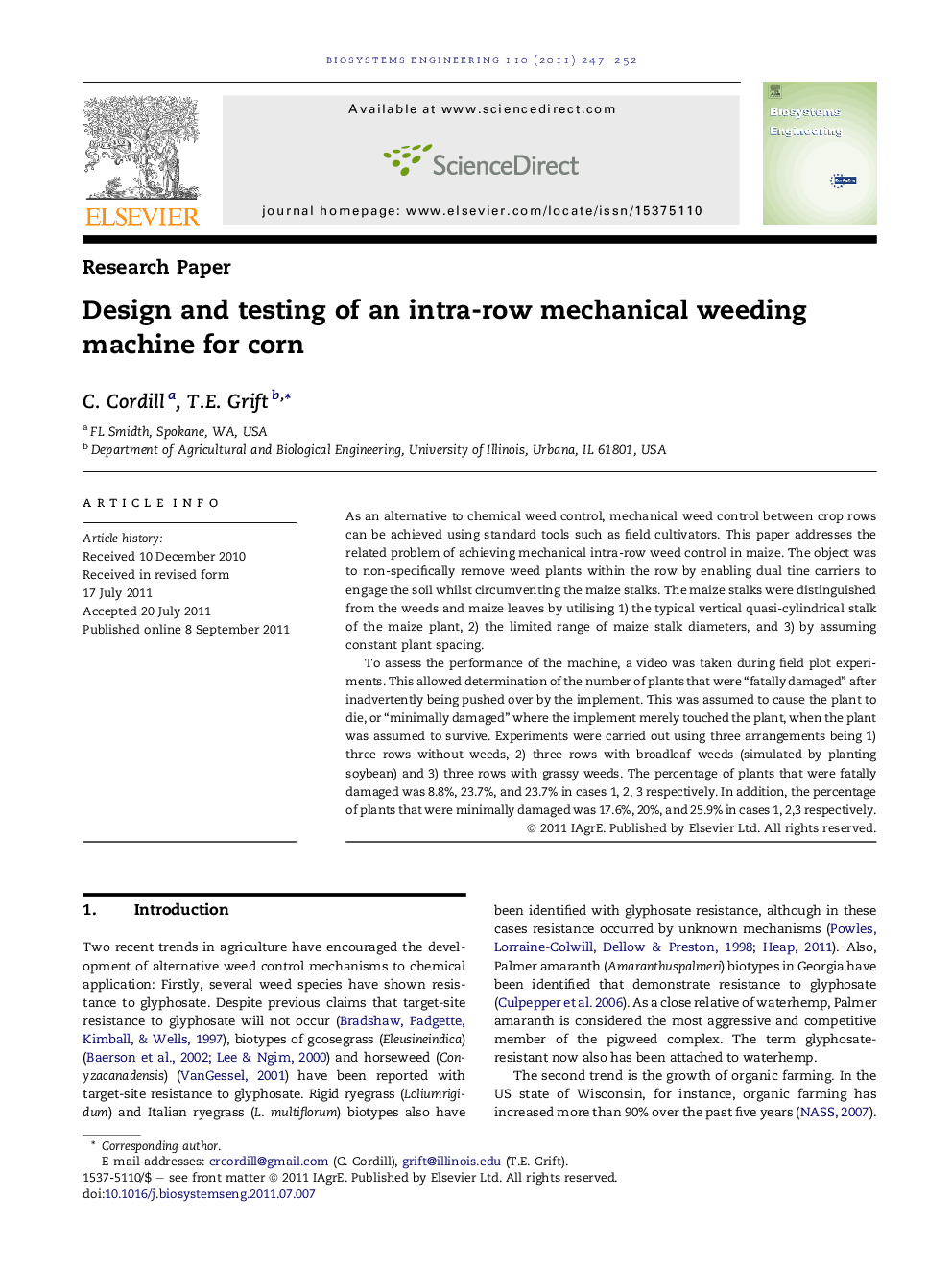| کد مقاله | کد نشریه | سال انتشار | مقاله انگلیسی | نسخه تمام متن |
|---|---|---|---|---|
| 1711597 | 1013088 | 2011 | 6 صفحه PDF | دانلود رایگان |

As an alternative to chemical weed control, mechanical weed control between crop rows can be achieved using standard tools such as field cultivators. This paper addresses the related problem of achieving mechanical intra-row weed control in maize. The object was to non-specifically remove weed plants within the row by enabling dual tine carriers to engage the soil whilst circumventing the maize stalks. The maize stalks were distinguished from the weeds and maize leaves by utilising 1) the typical vertical quasi-cylindrical stalk of the maize plant, 2) the limited range of maize stalk diameters, and 3) by assuming constant plant spacing.To assess the performance of the machine, a video was taken during field plot experiments. This allowed determination of the number of plants that were “fatally damaged” after inadvertently being pushed over by the implement. This was assumed to cause the plant to die, or “minimally damaged” where the implement merely touched the plant, when the plant was assumed to survive. Experiments were carried out using three arrangements being 1) three rows without weeds, 2) three rows with broadleaf weeds (simulated by planting soybean) and 3) three rows with grassy weeds. The percentage of plants that were fatally damaged was 8.8%, 23.7%, and 23.7% in cases 1, 2, 3 respectively. In addition, the percentage of plants that were minimally damaged was 17.6%, 20%, and 25.9% in cases 1, 2,3 respectively.
Figure optionsDownload as PowerPoint slideHighlights
► Intra-row weeding can be achieved using four laser beams as maize stalk detectors.
► A lateral quasi-sinusoidal motion allowed circumventing maize stalks in rows.
► In the absence of weeds, 8.8% of the plants were fatally damaged.
► Under heavy weed cover, up to 23.7% of plants were fatally damaged.
Journal: Biosystems Engineering - Volume 110, Issue 3, November 2011, Pages 247–252